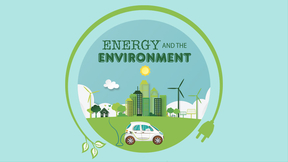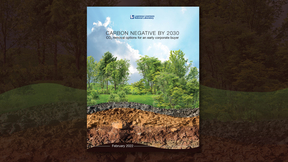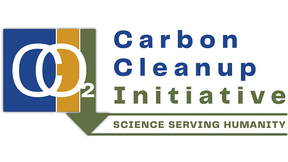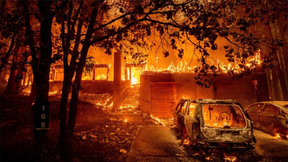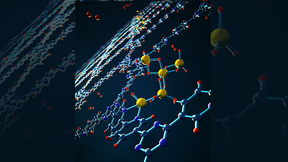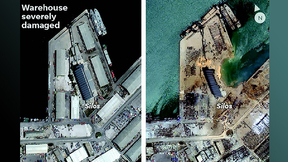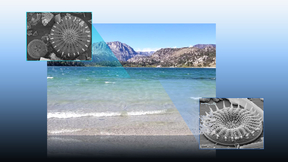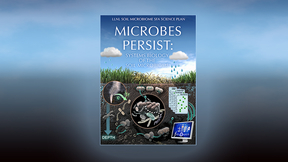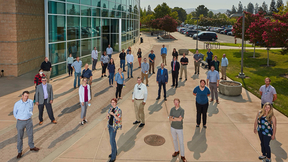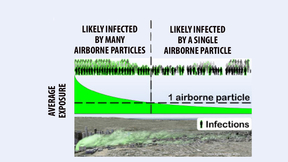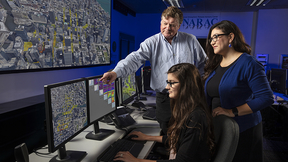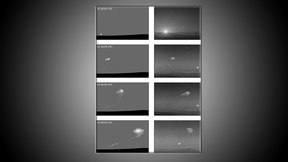Back
Atmospheric, Earth, and Energy
The Simple Cloud-Resolving E3SM Atmosphere Model (SCREAM)
Numerical models are a critical tool for predicting Earth’s future climate conditions due to the complex and inter-related processes controlling weather. While simulating the whole planet imposes severe computational challenges, global coverage is nonetheless necessary as local behavior propagates rapidly to distant areas of the globe. To solve these challenges, Peter…
Speeding up detection of climate change response to emission reductions
If humans decrease their greenhouse gas emissions to the atmosphere, how quickly would we detect a slowdown in global warming? In a recent study published in Nature Communications, Lawrence Livermore National Laboratory (LLNL) climate scientist Mark Zelinka and collaborators developed a novel approach to more quickly see the temperature response to strong emissions…
Americans move to more solar and wind power in 2021
The national economy is reenergizing, quite literally. In 2021, Americans used 5% more energy than in 2020, according to the most recent energy flow charts released by Lawrence Livermore National Laboratory (LLNL). Each year, LLNL releases flow charts that illustrate the nation's consumption and use of energy. In 2021, Americans used 97.3 quads (quadrillion BTU) of energy,…
Science on Saturday lectures break down the CO<sub>2</sub> problem
Throughout the month of February, scientists from the Physical and Life Sciences (PLS) directorate virtually participated in three of the four 2022 Science on Saturday (SOS) lectures, presenting on the theme “Energy and the Environment.” The SOS lecture series is an annual collaboration between scientists at Lawrence Livermore National Laboratory (LLNL) and staff members…
GEOSX Simulates Carbon Dioxide Storage
Since the Industrial Revolution, atmospheric carbon dioxide (CO2) levels have continued to rise. While oceans, plants, and soils can sequester some of this CO2 naturally, they cannot capture and remove it all, causing the excess to make its way into the atmosphere. Long-term storage solutions are needed to address the surplus—a contributor to climate change—and help the…
Lawrence Livermore shares recommendations for Microsoft to reach carbon-negative goal
Lawrence Livermore National Laboratory (LLNL) scientists have provided input on Microsoft’s pathway to become carbon-negative by 2030. LLNL researchers built on their pivotal report "Getting to Neutral: Options for Negative Carbon Emissions in California," which has become a trusted adviser in the discussion of how to remove carbon dioxide from the air, to make…
The Path to a Carbon Neutral California
A Livermore report outlines a strategy to reduce California’s carbon emissions to net zero by 2045.
Livermore Lab Foundation, Lawrence Livermore National Lab launch carbon education and outreach program
Helping the general public and students learn about carbon neutrality, the options for carbon dioxide removal, as well as the effects of climate change, is the focus of the Carbon Cleanup Initiative, a unique public awareness partnership from the Livermore Lab Foundation (LLF) and Lawrence Livermore National Laboratory (LLNL). “We are proud to partner with the scientists…
Human-caused climate change increases wildfire activity
The western United States has experienced a rapid increase of fire weather as the vapor pressure deficit (VPD) increases in the area during the warm season. New research by scientists at University of California, Los Angeles (UCLA) and Lawrence Livermore National Laboratory (LLNL) shows that two-thirds (approximately 68 percent) of the increase in VPD is due to human…
New hydrogen storage material steps on the gas
Hydrogen is increasingly viewed as essential to a sustainable world energy economy because it can store surplus renewable power, decarbonize transportation and serve as a zero-emission energy carrier. However, conventional high-pressure or cryogenic storage pose significant technical and engineering challenges. To overcome these challenges, Lawrence Livermore National…
Updated exascale system for earth simulations
A new version of the Energy Exascale Earth System Model (E3SM) is two times faster than its earlier version released in 2018. Earth system models have weather-scale resolution and use advanced computers to simulate aspects of Earth’s variability and anticipate decadal changes that will critically impact the U.S. energy sector in coming years. Version 2 of the Energy…
Just how big was the 2020 Beirut explosion?
On Aug. 4, 2020, one of the largest non-nuclear explosions in history pulverized a Beirut port and damaged more than half the city. The explosion resulted from the detonation of tons of ammonium nitrate, a combustible chemical compound commonly used in agriculture as a high-nitrate fertilizer, but which can also be used to manufacture explosives. Since that time, the…
Climate change in the Sierra Nevada has profoundly altered its lake ecosystems
Climate change has significantly impacted the natural systems of the Sierra Nevada, including the mountain lakes that are an iconic part of California’s natural beauty. New research from a Lawrence Livermore National Laboratory (LLNL) scientist and colleagues from the University of Kentucky (UK) and Indiana State University (ISU) shows that lake-sediment cores from a…
LLNL team wins $15 million to study how microbes affect carbon storage
Do dead microbes control the future of Earth’s climate? A team of researchers led by Lawrence Livermore National Laboratory (LLNL) suspects they might. Using new tools, the team can see which soil organisms are thriving and which are dying in California’s changing climate — and what happens to carbon in their cell biomass when they do. The seven-institution team has just…
R-cubed: Revolutionizing the present, anticipating the future
The Post-Detonation Rapid Response Research Venture — also known as R-cubed or R3 — is combining basic research and development of emergent technologies, predictive capabilities and systems assessment to revolutionize the speed and flexibility of technical nuclear forensic (TNF) response to nuclear events. The venture is a multi-laboratory collaboration led by Lawrence…
What if just one airborne particle was enough to infect you?
For some diseases, exposure to just a single airborne particle containing virus, bacteria or fungi can be infectious. When this happens, understanding and predicting airborne disease spread can be a whole lot easier. That’s the result of a new study by a Lawrence Livermore National Laboratory (LLNL) scientist who developed a new theory of airborne infectious disease spread…
NARAC at forefront in a post-9/11 world
Editor’s note: The following is part of a series of articles looking back at the Lab's response immediately following the Sept. 11 attacks and our contributions since that day 20 years ago. From keeping Americans safe at national events to assisting with international disasters, Lawrence Livermore National Laboratory’s (LLNL) National Atmospheric Release Advisory Center …
American Meteorological Society to present Zelinka with Henry G. Houghton Award
The Council of the American Meteorological Society (AMS) has selected atmospheric scientist Mark Zelinka of Lawrence Livermore National Laboratory (LLNL) to receive the Henry G. Houghton Award. Zelinka was cited by AMS for “innovative advances in understanding the critical involvement of clouds to achieve a better understanding of climate interactions.” According to AMS,…
Climate Change Comes into Focus
Advanced computer models, simulations, and analysis capabilities help scientists zoom in on Earth system processes and improve climate research.
Simulating nuclear cloud rise anywhere, anytime
For decades, understanding the behavior of a nuclear mushroom cloud was done with careful analysis of observations made during the testing era. Old photos, outdated film and incomplete weather data made precise calculations difficult. Now, with results published in Atmospheric Environment, Lawrence Livermore National Laboratory (LLNL) scientists are improving our…





